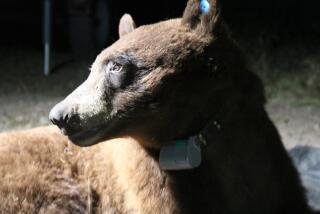
PINE MOUNTAIN CLUB, Calif. — Led by a sense of smell 100 times keener than that of humans, the predators have crashed through windows, ripped tiles off roofs and torn solid wood doors off their hinges to get at leftover pizza in a refrigerator.
They have also defecated on counters, furniture and floors as a “calling card,” officials say.
In a region of Southern California that wildlife authorities call a human-black bear conflict zone, the impending arrival of spring in this small mountain village is met with dread and fear as the hungry giants emerge from their winter torpor to search for food.
“Bears are a major problem here — and it’s getting worse,” said Patrice Stimpson, patrol chief of Pine Mountain Club — a community of some 2,800 residents in the San Emigdio Mountains, about 75 miles north of Los Angeles.
“They’ve caused hundreds of thousands of dollars in property damage,” Stimpson said. “Last year, a house caught fire after a bear climbed onto the gas stove and turned on the burners. A few cars were nearly totaled by bears rummaging for crushed cookies between the seats.”
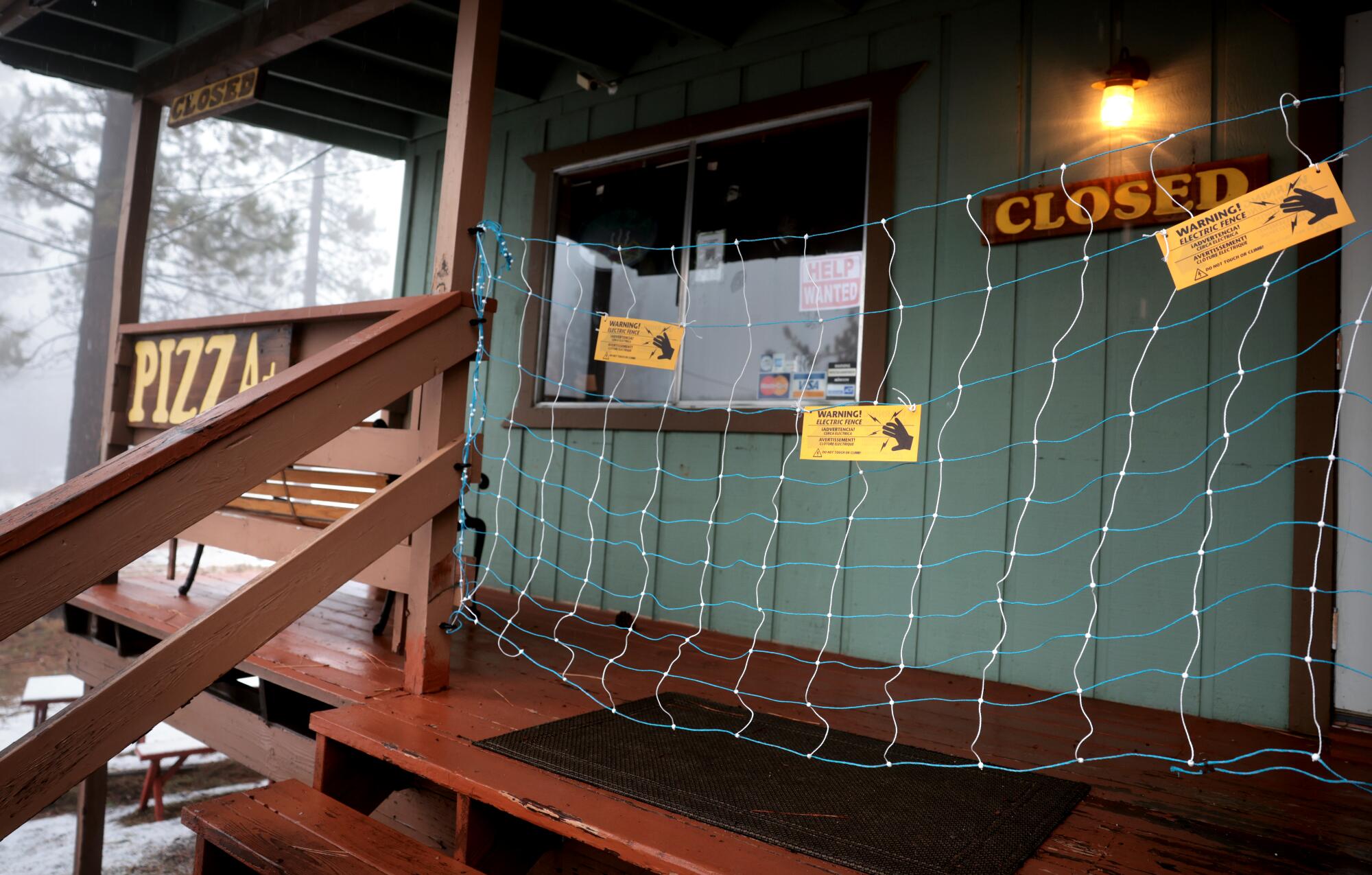
Wildlife authorities across the nation have been reporting an increase in human-black bear interactions for decades, and this is especially true in California, where urban growth — as well as increasingly severe wildfires and drought — has caused a growing number of bears to seek food in areas dominated by humans.
Although crowded tourist enclaves such as Lake Tahoe and Mammoth Lakes are well known for bear incidents — particularly those in which the animals are struck and killed by vehicles — the ursines are also being reported along the Central Coast and in the Transverse mountain ranges of Southern California, where they were never seen 50 years ago.
At Kern County’s Pine Mountain Club, where annual black bear invasions began in earnest about a decade ago, home and vehicle break-ins are a recurring source of stress, as well as community division. While some residents urge peaceful coexistence with the bears, others want to see them eradicated.
A particular point of contention in the conflict has been the deliberate feeding of bears. Tempers have flared in community gatherings, homeowner meetings, on the pages of newspapers and on social media sites, with some local activists demanding that people who feed bears be prosecuted. (It is illegal to deliberately feed a black bear in California, and penalties may include a fine or jail time.)
The number of calls to Stimpson’s office seeking wildlife assistance has reached a record high of 563 for the fiscal year beginning July 1, 2023. That’s up from 319 the previous year. “Ninety-nine percent of those calls involved bears,” she said.
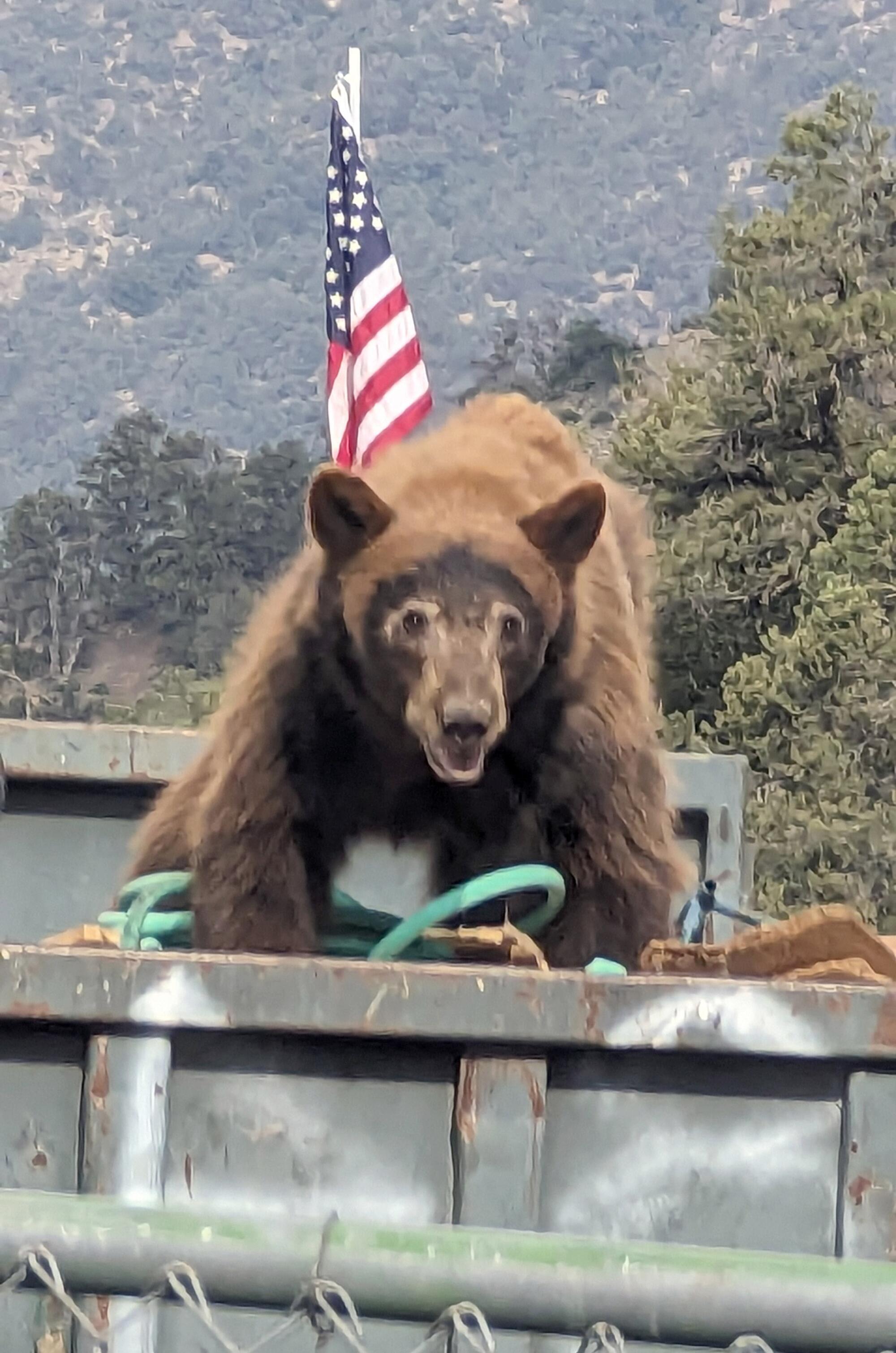
The number of entries into homes and sheds has also increased. There were 322 entries recorded in 2023, up from 311 the previous year, according to Vicky Kraft, a community activist whose Los Padres Bear Aware group tries to keep track of them. The group also recorded 179 vehicle break-ins last year.
Early this month, three homes were invaded in as many days.
“We have too many habituated bears and people who keep feeding them,” Kraft said. “If I had the power to do it, I’d remove the bears — all of them.”
That kind of talk rankles James Weinstock, 75, who has made feeding wildlife around his home, including two bears he calls Cinnamon and Blackie, part of his daily routine.

“I love bears; they’re just big puppy dogs,” he said. “Getting along with these critters is the right thing to do. It pleases the Lord.”

Subscribers get exclusive access to this story
We’re offering L.A. Times subscribers special access to our best journalism. Thank you for your support.
Explore more Subscriber Exclusive content.
But no friendship is completely free of conflict.
Take the time in 2021 that Weinstock said he left his backdoor open, allowing the briny aroma of a fish sandwich sitting on a washing machine to beckon a hungry bear into his home.
“That bear was already eating my lunch when I hit him in the head with a baseball bat,” he recalled. “The bear got up and took a swing at me.”
“It took a lot of skin off my arm,” he added, rolling up a shirt sleeve that hid several crimson scars on his right arm.

It’s not just residents who are suffering property losses and the risk of serious injury, however. Often overlooked in California’s ursine onslaught are the debilitating injuries suffered by bears as they forage for food and water in developed areas. The animals often suffer lacerations to their heads, backs and legs from broken glass, or ingest toxic household substances such as laundry detergent, motor oil and carpet cleaner.
In conversations with anyone who will listen, Todd Greisen, general manager of the Pine Mountain Club Property Owners Assn., continues to argue that “it is extremely important to report damage to the California Department of Fish and Wildlife. The more people report, the more state resources our area will be assigned. We need help.”
Sign up for This Evening's Big Stories
Catch up on the day with the 7 biggest L.A. Times stories in your inbox every weekday evening.
You may occasionally receive promotional content from the Los Angeles Times.
Some people here, however, question that recommendation. That’s partly because reports of vacationers in Airbnb and other short-term rentals luring black bears with raspberries and strips of bacon tossed off the decks of mountain chalets could hamper lucrative income streams.
“Only a small number of incidents are reported to us,” said Chris De Tar, a human-wildlife conflict specialist with the California Department of Fish and Wildlife. “There are a few reasons for that, including a misconception that if you report a conflict our department will euthanize the bear.”
Distressing face-to-face encounters are not the only effect the bears have on daily life.
Killing a bear, which is legally classified as a game mammal, without a depredation permit, is a misdemeanor punishable by up to one year’s imprisonment or a fine of up to $10,000, or both. In addition, discharging of firearms and shooting a bow and arrow within the Pine Mountain Club development is strictly prohibited.
But several bears have been shot and killed in Pine Mountain Club without depredation permits over the last decade. Many more have been killed in vehicle collisions.
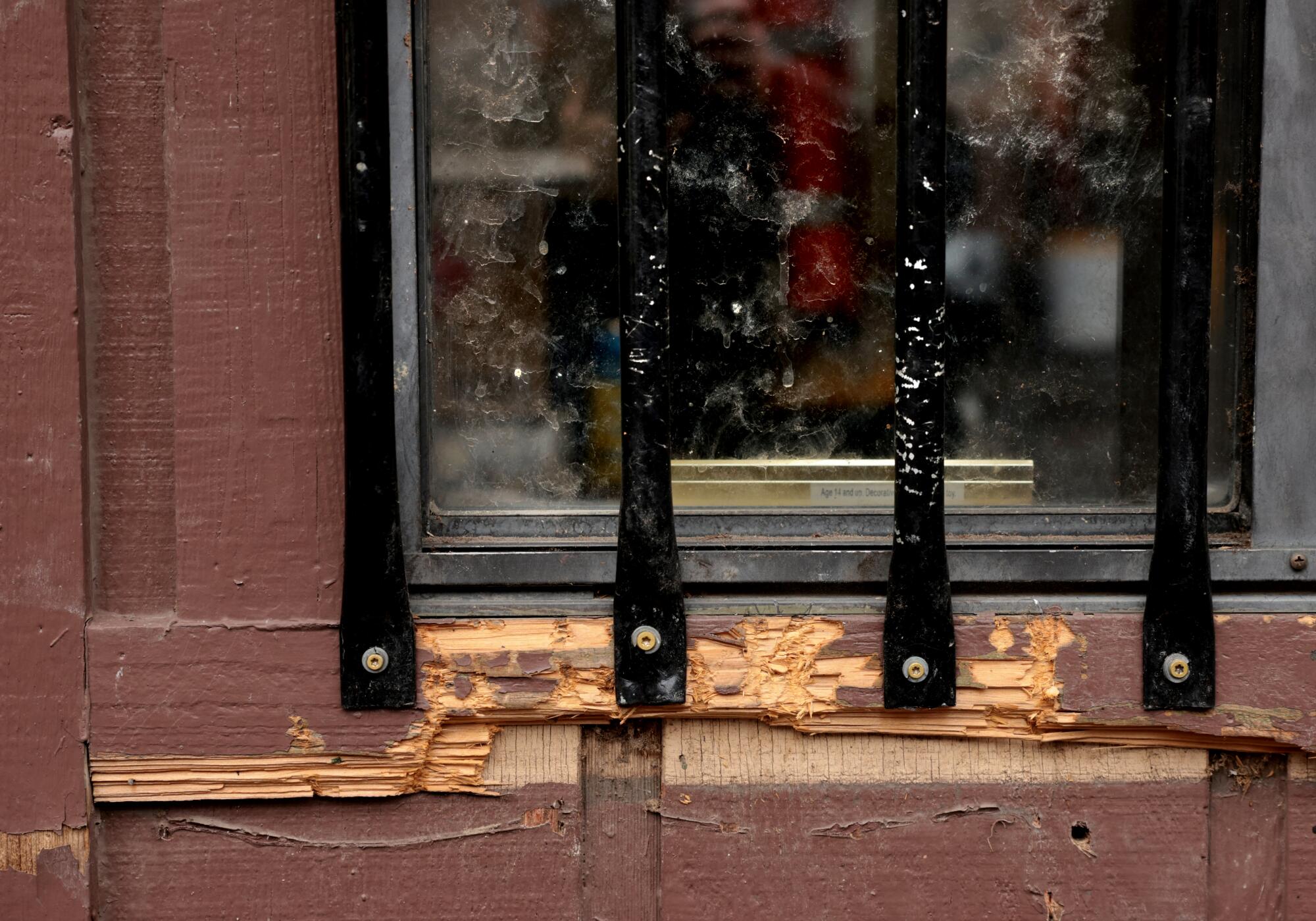
In 2014, when at least three bears were shot and killed here, state and federal wildlife authorities investigated reports of illegal bear traps set along neighborhood streets and in surrounding Los Padres National Forest land.
In 2022, a $10,000 reward was offered for information leading to the arrest and conviction of the person responsible for shooting a bear with a bow and arrow. That animal was found lying in a neighborhood street with an arrow sticking out of its back, patrol officials said.
Tensions between communities and wild predators have become more common across the West in recent decades as wildlife conservationists and government agencies have advocated coexistence with the animals, rather than extermination.
In places such as Pine Mountain Club, it is hard to find a balance that is sustainable.
Los Padres Bear Aware warns that living with bears here requires special precautions: Keep vehicles locked with no scented items inside, including air freshener. Remove child car seats and wash the car seat frequently. Never store food or scented items in crawl spaces, sheds and garages. Do not leave the doors of homes and cars unlocked because habituated bears can open them.
Efforts to prevent scary bear entries run the gamut.
Some residents say hazing techniques — such as banging pots and pans together, waving arms and shouting “Shoo, bear! Shoo!” — can effectively keep bears away from homes, garages and sheds.
Others recommend placing “bear unwelcome mats” bristling with half-inch-long nails sticking out of the fabric in front of doors and windows, and around property boundaries.
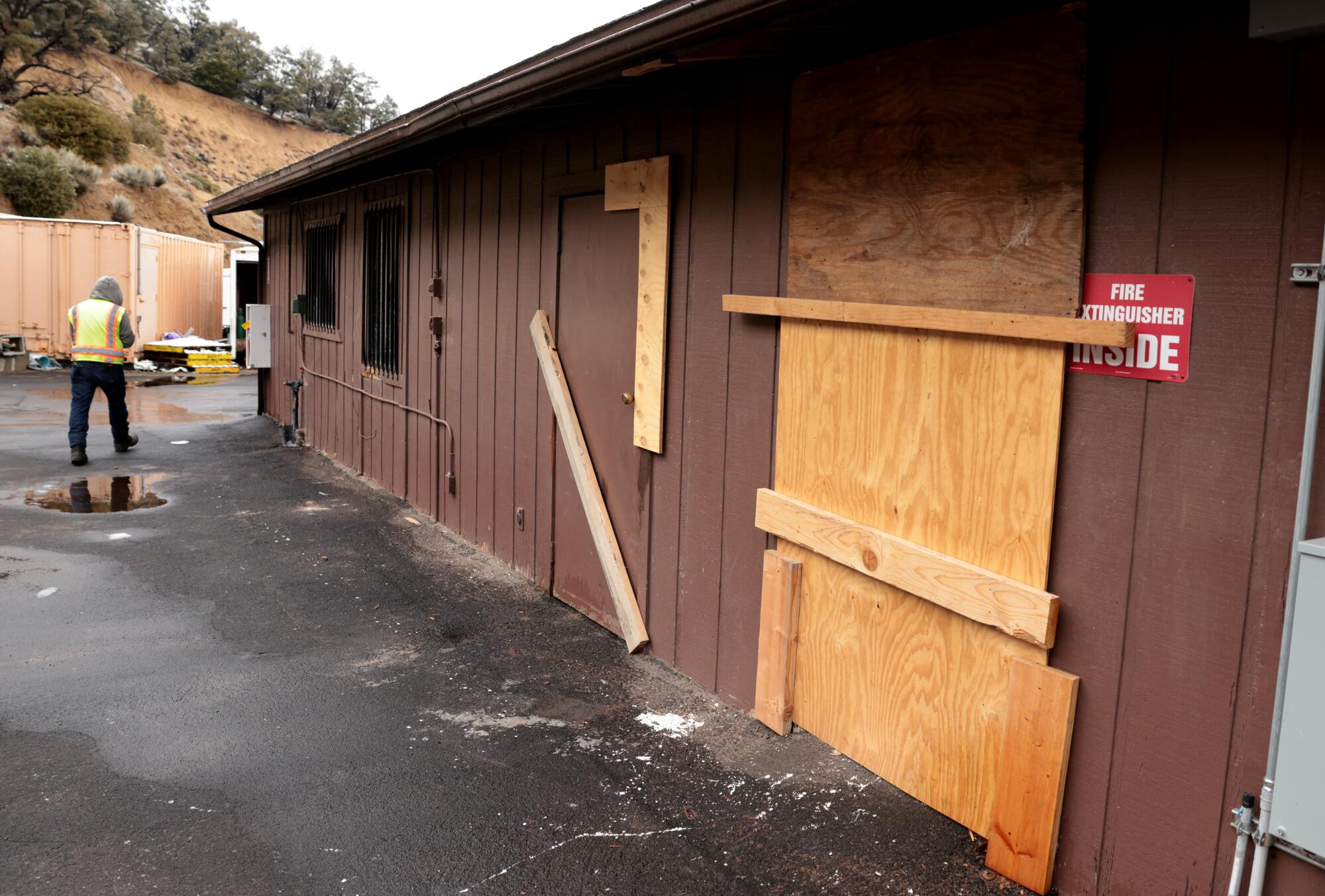
Then there’s Ian Sawry, a retired police officer and member of Pine Mountain Club’s volunteer emergency response team, who plans this month to market a homemade security system designed to zap intruding bears with an uncomfortable jolt of electricity via wires strung up across doors and windows.
“The effect is similar to the shock you’d get from a 9-volt battery, only a little sharper,” said Sawry, who is not an electrician. “To prove its safety to potential customers, I’m using my own house as a demo.”
The rise in break-ins has brought growing concern for public safety, so Stimpson’s patrol team occasionally uses paintball guns as a deterrent.
“We shoot the bears in the rear,” she said, “and it sends them running.”
Although it’s commonly assumed that black bears sleep while in hibernation, this is not the case. Instead, they survive the wind and cold of winter by retreating to dens and shelters in a state of torpor, a temporary sluggish condition that saves energy when traditional food sources such as berries, acorns and fawns are scarce.
But as development spreads to Southern California wildlands, black bears can remain active throughout the year because of the abundance of accessible human food in garbage cans, gardens, homes and vehicles. This type of habituation is a particular problem, state wildlife authorities say, and officials are still grappling with how to approach the issue.
“We’re seeing hundreds of bear entries each year in our little community,” Sawry said. “Can you imagine the uproar if they were home burglaries instead of bear break-ins?”
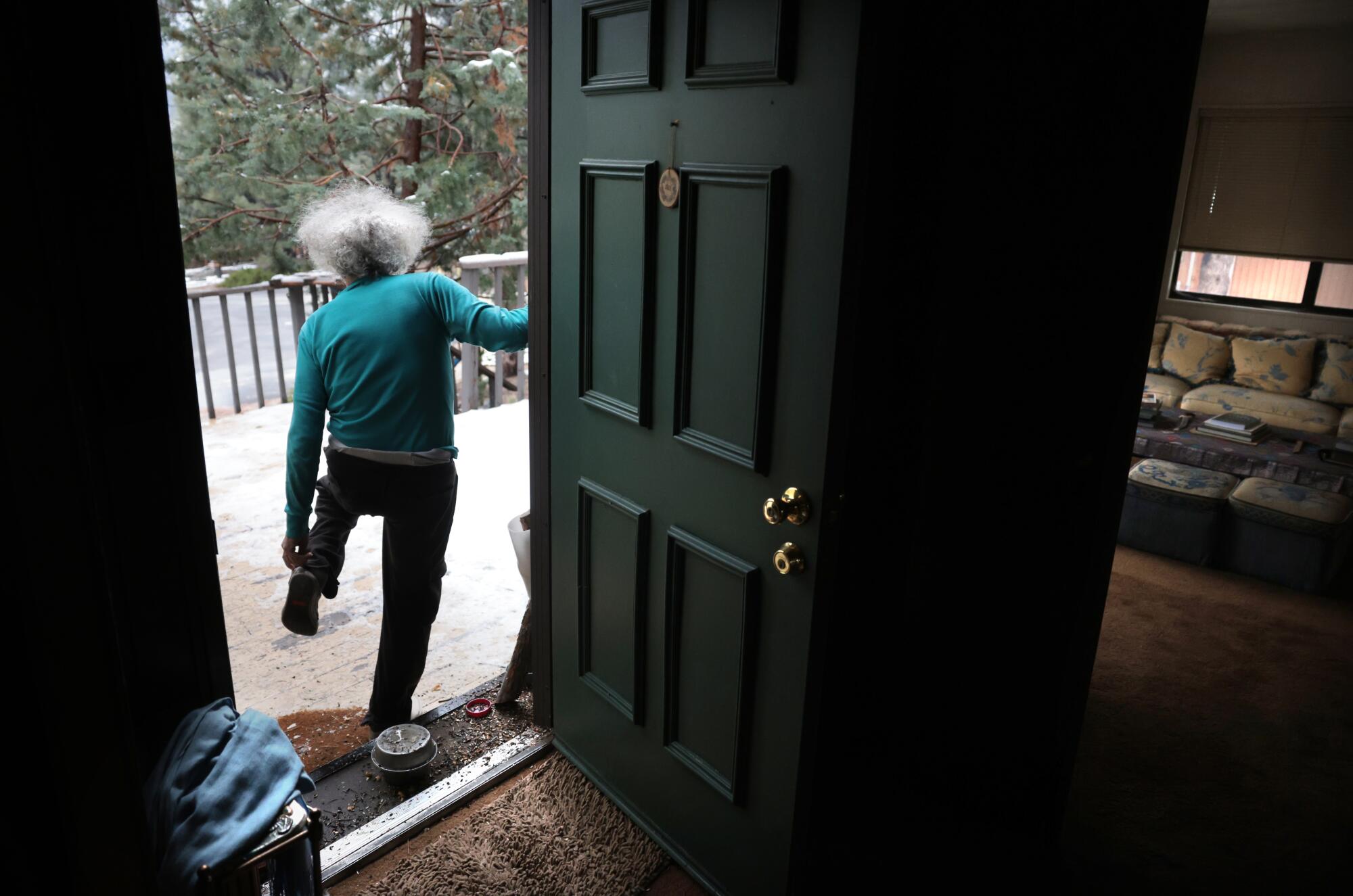
For residents of Pine Mountain Club, there are already plenty of signs that they are entering what is likely to be a very active bear season.
Recently, patrol officer Jeff Fredericks wheeled his pickup truck over a carpet of freshly fallen snow and into the Pine Mountain Club’s maintenance yard, where he scanned for bears.
No predatory eyes returned his stare, but unnerving evidence of their recent presence was impossible to miss: a door torn off its hinges, splintered windowsills, twisted metal siding and muddy paw prints on the windows of a shed containing a ravaged refrigerator, which had been used to store employees’ sack lunches.
“The bears started hitting this place a lot last summer,” he said. “Now, they’re back, and there’s only so much we can do.”
Toward a more sustainable California
Get Boiling Point, our newsletter exploring climate change, energy and the environment, and become part of the conversation — and the solution.
You may occasionally receive promotional content from the Los Angeles Times.


